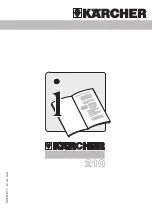
PLASTIC GRANULES
The granules mixture is carefully designed by MARTINS INDUSTRIES to give the best possible washing result without
damaging the rims. It has specially adapted floating properties, degrees of hardness and wearing qualities. MARTINS
INDUSTRIES will
NOT
accept any responsibility or warranty claims what so ever for operational disturbances in the
machine, for instance blocked pipes caused by the use of non approved granules in connection with the Wheel Washer.
Furthermore, MARTINS INDUSTRIES is
NOT
responsible for the safety of the machine (declared through the CE label)
when other granules are used.
TECHNICAL SPECIFICATIONS
Company Info: MARTINS INDUSTRIES
1200 Industrial BLVD,
Farnham, Qc, J2B 3N5
CANADA
Machine model: W-550
Weight: 256 kg (564 Lbs)
Electrical connection: 230 VOLTS – 20 AMPS
Compressed air connection: Min 10 bar (150 psi) max 13 bar (200 psi)
Water volume: 300 litres (80 US GAL)
Maximum wheel weight: 45 kg (100 lbs)
Maximum wheel size: 800 x 325 mm (32’’ x 13’’)
Minimum wheel size: 560 x 135 mm (22-3/8’’ x 5-3/8’’)
Sound pressure level: 79 dB (A) measured at a distance of 1 meter
Sound power level: 94 dB (A)
GUARANTEE
MARTINS INDUSTRIES provides guarantee under the condition, that the machine is used and maintained according to the
instructions. The guarantee is valid for one year, or up to max. 8000 wash cycles. The guarantee covers only the change of
parts to new spare parts and is not valid for repairing work. Always state the machine number and manufacturing year when
claiming the guarantee or ordering spare parts. This data can be found on the silver coloured plate in the motor room. Do also
state the date of purchase at the same time.
INSTRUCTIONS FOR USE
1.
Turn on the red/yellow main switch.
2.
Open the lid (no. 12 picture 3) and place the wheel into the machine, the outside of the wheel to the right as this side
washes most efficiently.
Please note that possible decoration covers for example in plastic in the center of the rim must
be removed before washing the wheel.
We strongly recommend that also the
valve cap is removed
from the wheel before washing as this may cause operational
disturbances if it falls off during the wash cycle (see the chapter “TROUBLE SHOOTING”).
Wheels with protruding parts on the rim, beyond the contour of the tyre, are under no circumstances to be washed in the
Wheel Washer.
The protruding parts can be damaged
(symbol 4, picture 2).
If narrow wheels are incorrectly placed in the wash room, it can be difficult for them to rotate during the wash cycle.
Place the wheel in a way that it stands as straight as possible to minimize the risk that it will slide during the wash
cycle.
A wheel with a puncture that has been standing for too long, that it has turned flat at one point and is not round
anymore can not be washed in the machine since it will not rotate properly.
3.
Close the lid.
Never let go of the lid, before it is either fully closed or fully open.
4.
Start the machine (see item 5 in the next chapter).
After cleaning, the wheel will continue to rotate for 10 sec, and the granules on the wheel will be blown off by compressed
air. When the wheel has stopped rotating, the wash cycle is completed, and the wheel can be taken out. It is possible to run an
extra cycle with air blowing only (see item 8 in the next chapter).
(The basic setting of 10 seconds. return stroke with air blowing is re-programmed as follows: Simultaneously press on key 2
and key 90 seconds. and set the desired time with key 30 or 60 seconds. Afterwards confirm with key 120 seconds.).
The machine is equipped with two security sensors. These will prevent the machine from operating if the lid is open or the
door to the motor room is not in place. Should you open the lid or door during operation, the washing will be interrupted
immediately. To resume washing, close the lid/door and press the start button again.
5.
Finally, always check that there are no granules left on the tyre before it is mounted onto the car.































